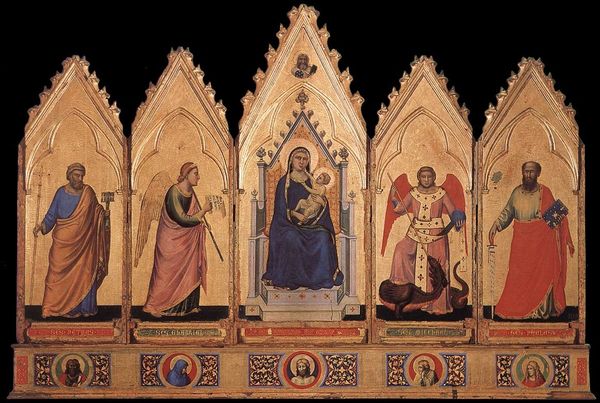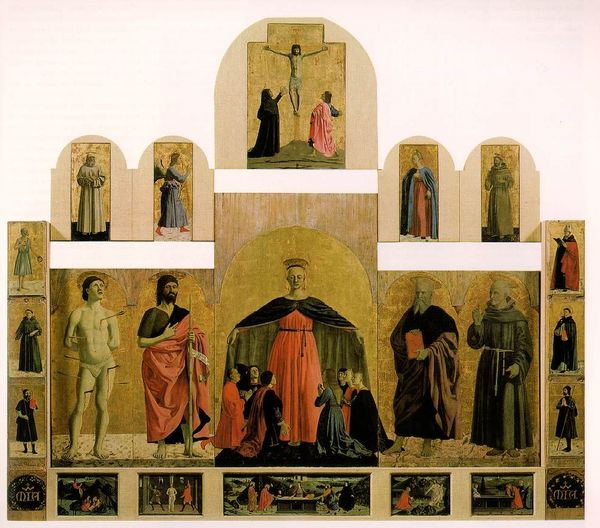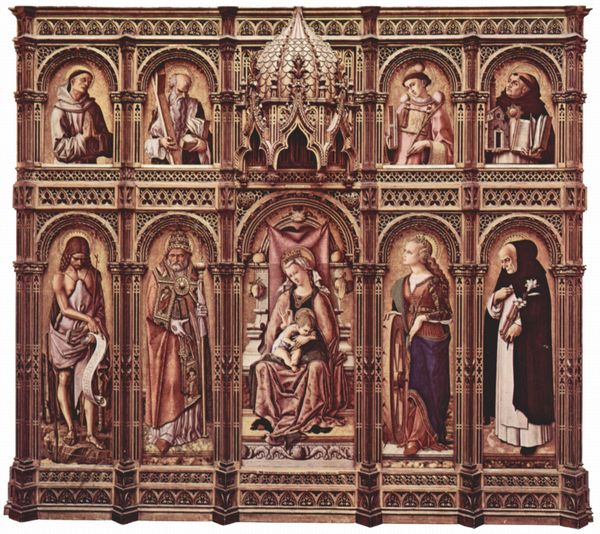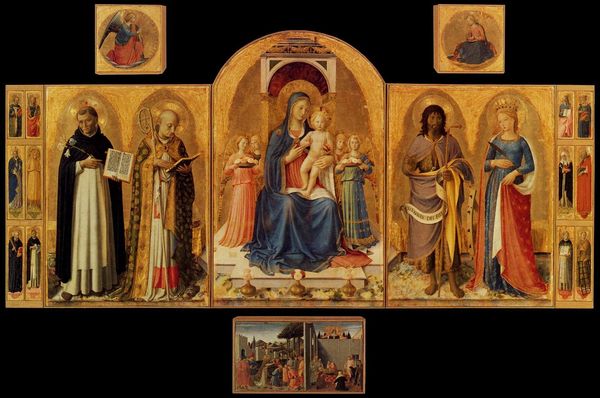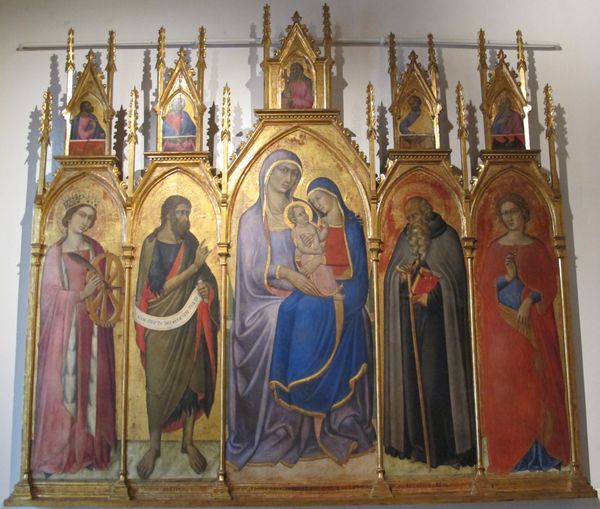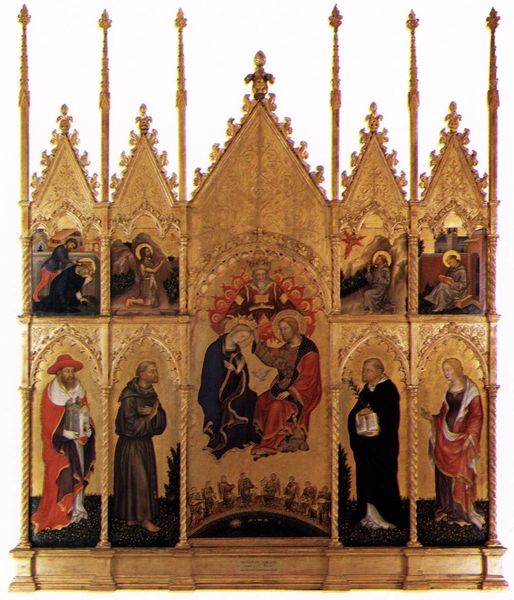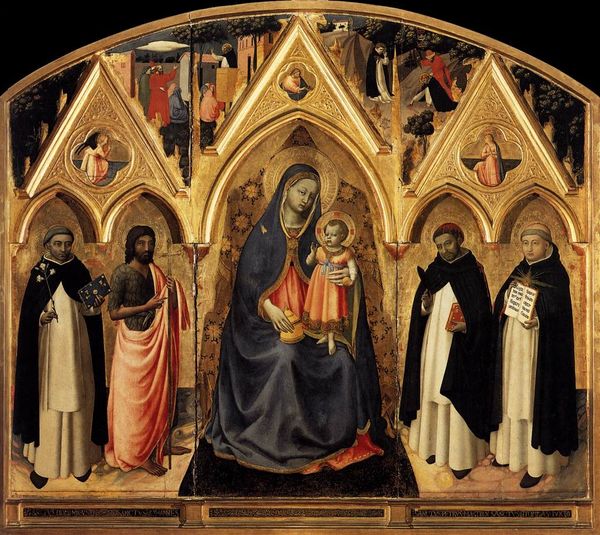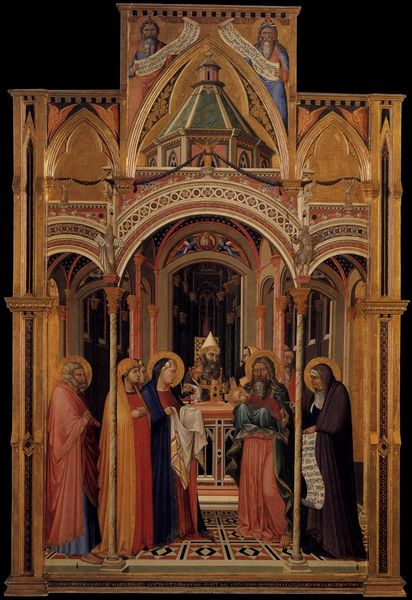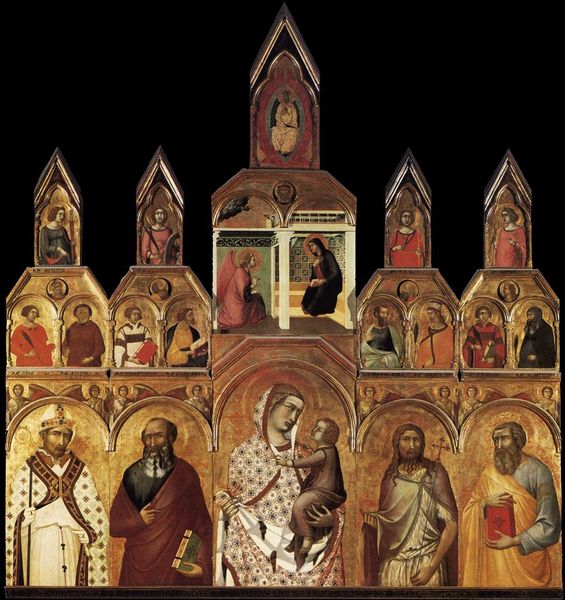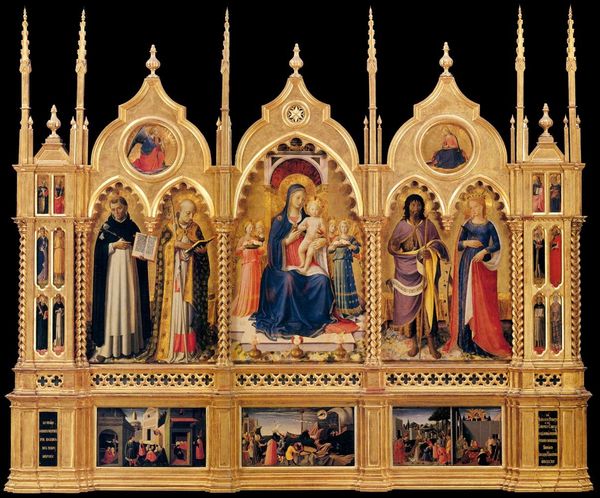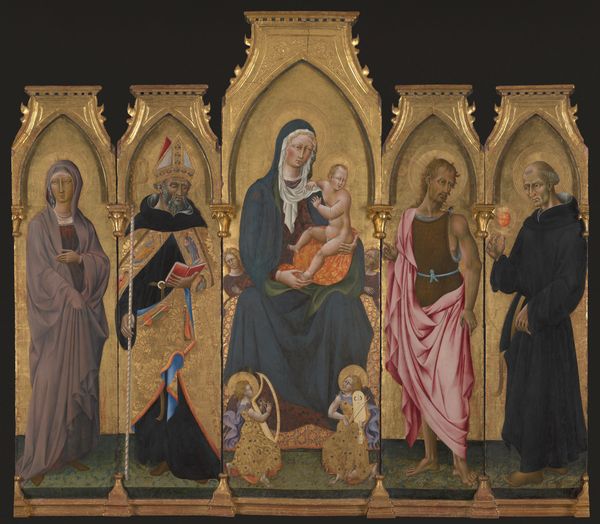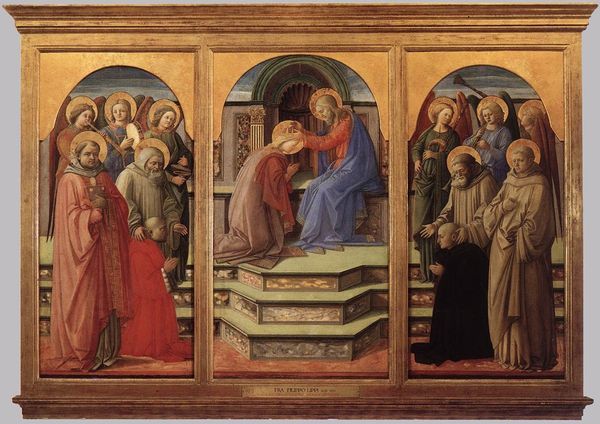
panel, tempera, painting
#
portrait
#
panel
#
tempera
#
painting
#
prophet
#
sculpture
#
holy-places
#
figuration
#
christianity
#
history-painting
#
italian-renaissance
#
early-renaissance
#
christ
Dimensions: 230 x 177 cm
Copyright: Public domain
Andrea Mantegna painted this polyptych of St. Luke in the mid-15th century, reflecting a period where religious art served as a powerful tool for cultural and spiritual instruction. The painting encapsulates the intersection of faith, artistic patronage, and the social hierarchies of Renaissance Italy. Mantegna’s choice to depict Saint Luke, traditionally seen as the patron saint of artists, suggests an exploration of the artist’s own identity and role in society. The rigid, almost stoic, figures and the carefully rendered details speak to a desire for order and permanence in a world often disrupted by political and religious conflict. The polyptych—with its structured arrangement of saints—served not only as an object of devotion but also as a visual embodiment of established power structures within the church and the state. Through its use of symbolism, color, and composition, Mantegna’s work invites us to consider the complex relationship between art, religion, and society during the Renaissance. The artwork serves as both a reflection of and an active participant in the cultural conversations that shaped the identities and experiences of its viewers.
Comments
No comments
Be the first to comment and join the conversation on the ultimate creative platform.
